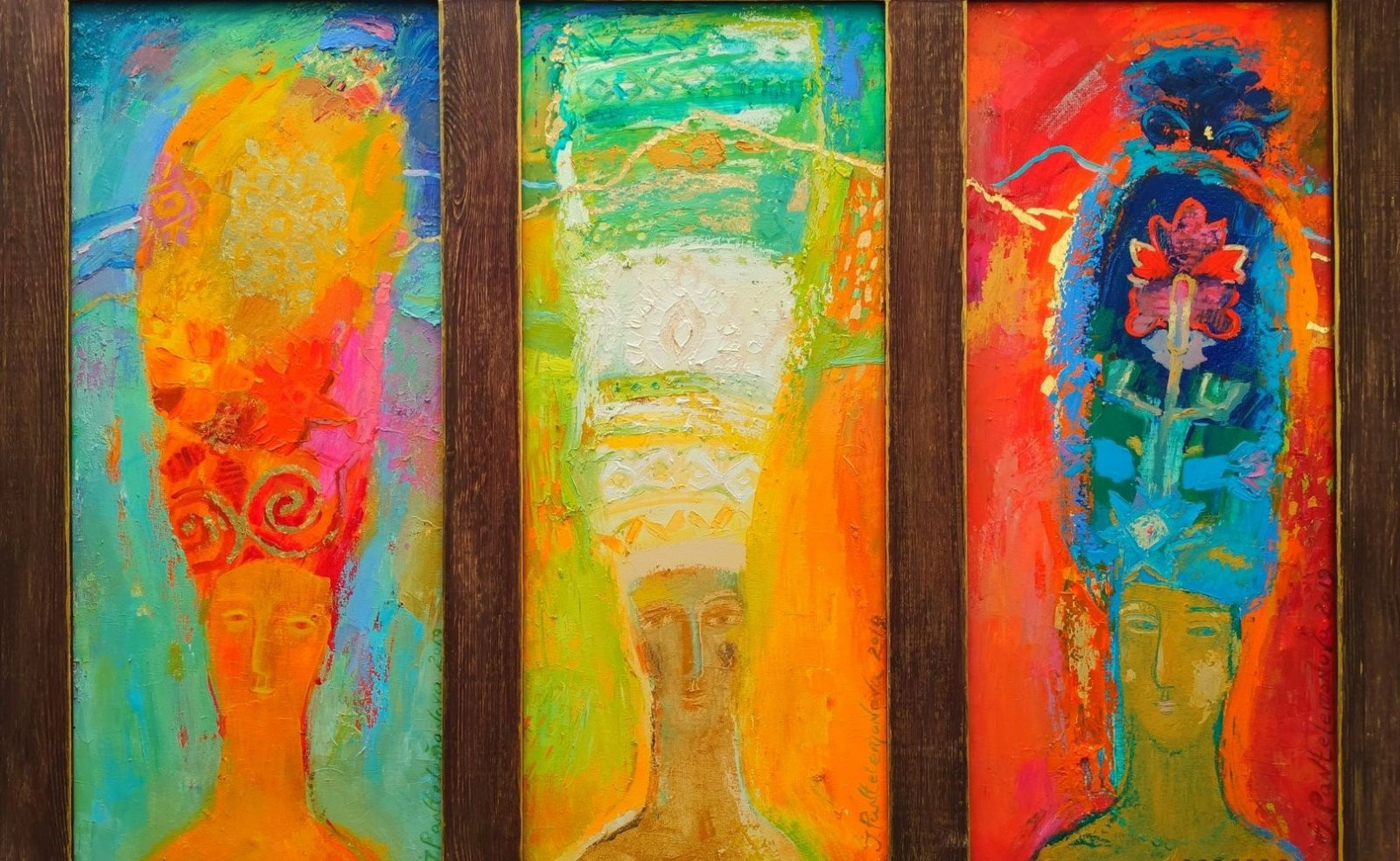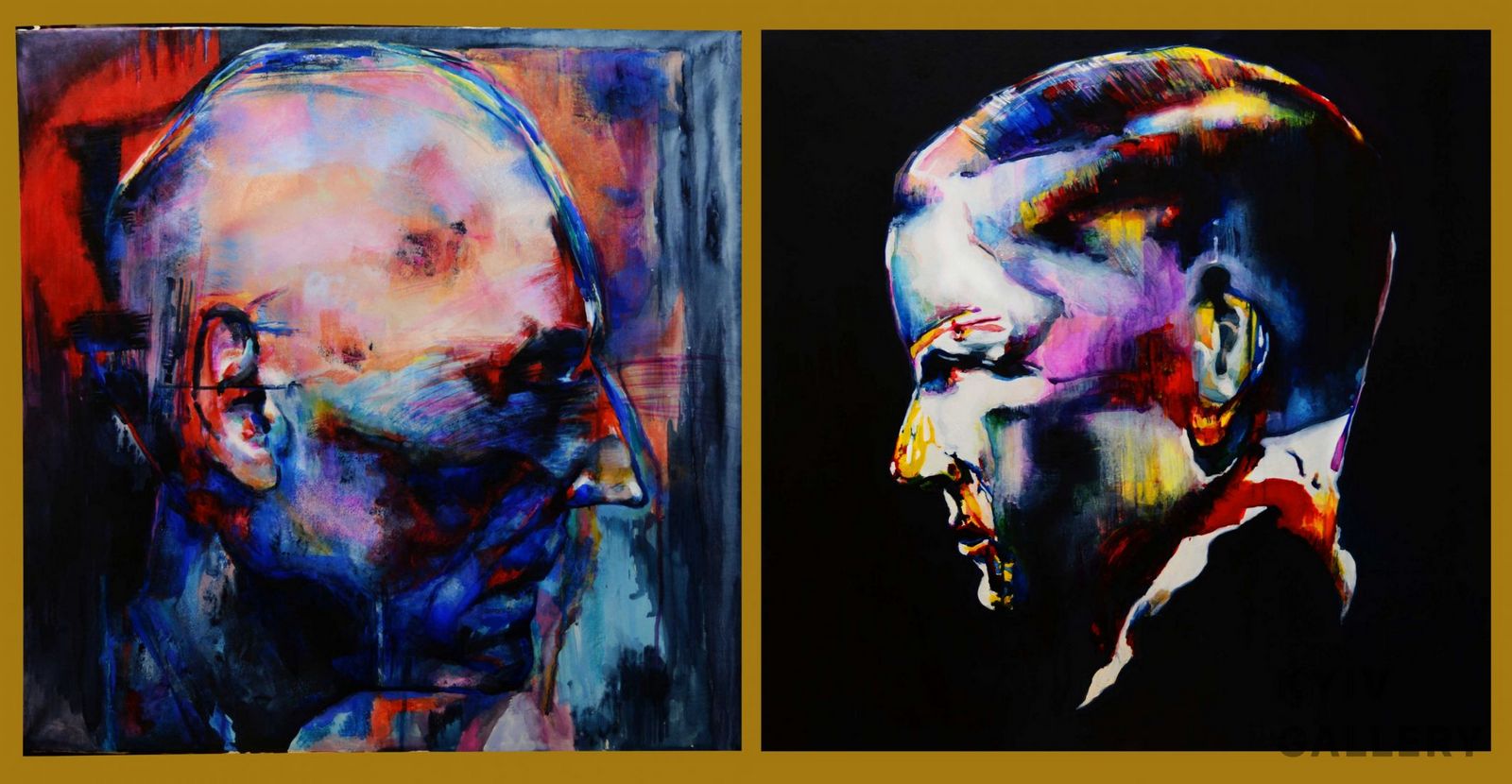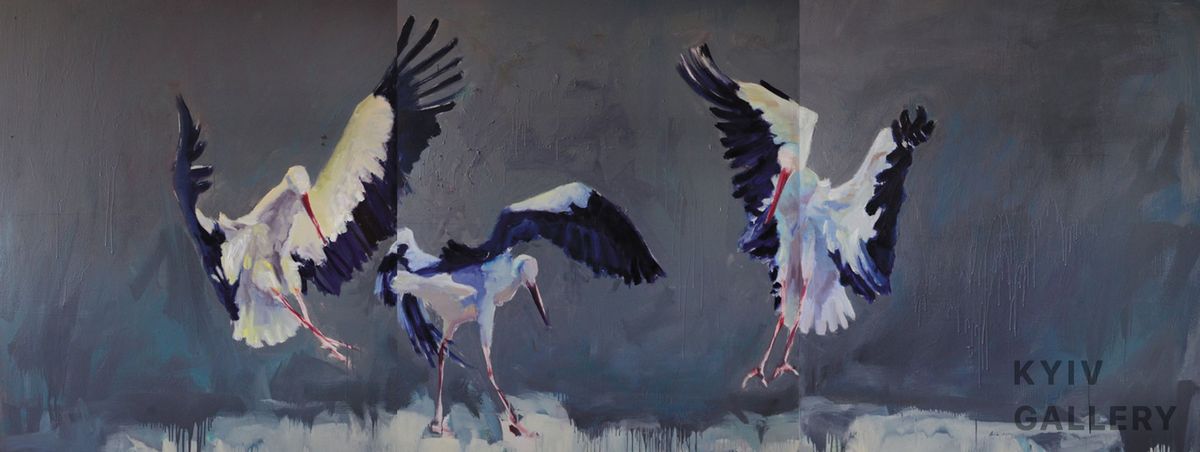

A modular painting is a group of paintings united by a common concept and composition. They can be fastened together or be separate works with their microplots. Multi-piece set paintings are used in fine art and design. Because of this, there often needs to be more clarity with conceptual definitions. In design, the work's artistic value plays a secondary role, giving way to such characteristics as color and shape. Dividing the space of the canvas into several parts performs practical tasks: fragmentation makes it possible to organically integrate the canvas into the interior, coordinating its shape with the decorative elements and furniture surrounding it. Without paying much attention to the artistic value of the canvas, designers often call "modular paintings" ordinary photo prints or other reproductions.

Veronika Cherednychenko, painting "Rainbow for Mom", ID 12717
But in the fine arts, this concept is used exclusively to refer to independent works that are of interest to its tradition. Here modular paintings serve to achieve completely different objectives not related to the problems of technical aesthetics. Fragmentation of artistic space makes it possible to create a real narrative, show the evolution of objects or demonstrate the dynamics of movements.
Types of modular paintings
The history of modular paintings has been more than a thousand years. During this time, they were used to working in different styles and genres, so the primary criterion for distinguishing modular paintings was the number of panels.
Diptych
Multi-piece set paintings painted on two panels. The first diptychs dedicated to religious themes appeared in the early Middle Ages. The number of panels is ideal for a story in two acts or for demonstrating objects in the most significant and vivid hypostases. The modules can be arranged on both stapled and unstapled canvases.

Mariia Drozdova, painting "Two-faced Janus. The beginning, the end.", ID 12536
One of the most famous diptychs was the work of Jean Fouquet. For a long time, the panels of his "Melensky Diptych" were considered independent works until researchers managed to confirm the hypothesis of the connection of paintings with the help of chemical analysis of the canvas.
Triptych
The picture is painted on three canvases. In the Renaissance, triptychs were used for religious stories and iconography.

Ihor Melnyk, painting "Dance. Triptych.", ID 10162
The horizontal orientation of the canvases fit well into the temple interior and gave the artist space to build plots stretched over time. Bosch's triptych, "The Temptation of St. Anthony," was an excellent demonstration of the potential of modular formats in deploying complex narratives.
Polyptych
A polyptych is a modular painting consisting of four or more fragments. Most works of this type were created for altars in the tradition of Christian religious art. One of the iconic works of the XV century was "Polyptych of Pesaro" (A. Vivarini). A kind of polyptych is a quadriptych. Its modules are located on one canvas, and the general outline repeats a square shape. The famous "Quadriptych of Stein" (S. Bening) has 64 panels.
The most famous multi-piece set paintings
"Adam and Eve" (A. Dürer). A diptych of the German master whose fate resembles an adventure novel. His panels visited the courts of several European monarchs, became military booty, and were almost burned at the stake for their "obscenity." In the XIX century, they were kept in a closed room, access to which could be obtained only with special permission.
"Marilyn Diptych" (E. Warhol). The work of the king of pop art was a kind of attempt to comprehend the life of the American actress Marilyn Monroe creatively. The left part of the diptych is devoted to the period of creative take-off in the career of Hollywood beauty, and the right is to the actress's image after her tragic death. The silkscreen by E. Warhol was included in the list of the greatest works of contemporary art, according to The Guardian.
"The Garden of Earthly Delights" (J. Bosch). The famous triptych is one of the most challenging works of art to interpret. Some images on the canvas remain undeciphered after five centuries. The work demonstrates the narrative potential of classical triptychs: on three modules, the viewer can trace the history of the fall, life, and posthumous fate of all humanity.
"Three Essays for the Portrait of Lucien Freud" (F. Bacon). The famous triptych is dedicated to the friend and ideological associate of the artist, whose friendship lasted for several decades. The modules were in private collections in Europe and Japan for a long time. The collector Simon Nikes managed to unite the paintings in the late 80s. In 2013, the art piece was sold for a record $ 142.4 million at Christie's auction.
"The Exaltation of the Cross" (P. Rubens). The triptych departs from the traditional manner of depicting the crucifixion for Christian art. According to the master's idea, the viewer becomes a witness to the event, experiencing a wide range of emotions. The gloomy atmosphere and tension of the participants' bodies in the execution enhance the sense of the drama of the situation. The triptych spent several years in Paris, where Emperor Napoleon brought it.
KyivGallery art critic
